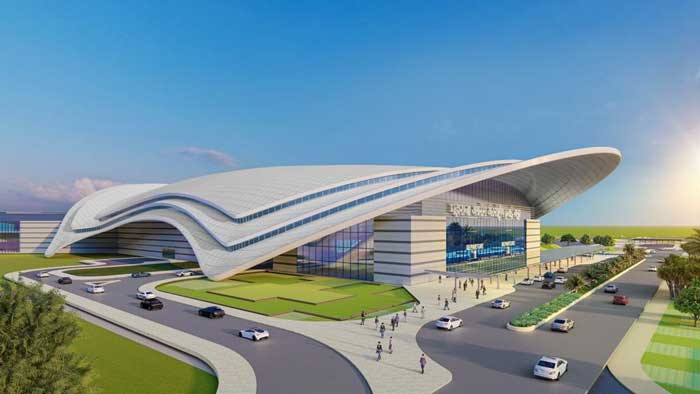A successful rollout of the Hisar airport project may result in the region reclaiming its historical legacy as a major commercial centre.
Located nearly 150 km from Delhi, Rakhigarhi in Hisar district is today recognised as the largest site of the over 5,000-year-old mercantile Indus-Saraswati River Valley Civilisation. Therefore, the resumption of civilian flights from Maharaja Agrasen Airport boosts the country’s push for aerotropolises or integrated aviation hubs. A new concept in urban planning, an aerotropolis is a city whose infrastructure, land use and economy are centred around an airport, which provides fast connectivity to different parts of the world.
And subject to the project’s successful execution and user demand, this may result in the area reclaiming its historical position as one of the country’s important commercial hubs.
The western state’s first airport is being expanded in three phases on 7,000 acres. A domestic terminal under the subsidised Udan-Regional Connectivity Scheme (RCS) marks the completion of the project’s first phase.
Due to its location, the international airport Shaheed Bhagat Singh International Airport in Haryana and Punjab’s shared capital, Chandigarh, largely caters to traffic from Punjab and Himachal Pradesh. Consequently, several air travellers from Haryana prefer to board flights from Delhi’s Indira Gandhi International Airport. But that is expected to change with the growth in flights from Hisar airport. By 2030, Hisar would be upgraded to the status of an international airport.
Lauding the commencement of Alliance Air’s Hisar to Ayodhya flight, Prime Minister Narendra Modi told a 100,000-strong assembly of people from nearby towns and villages at the site on November 14, “Today, the number of airports in the country has crossed 150. Nearly 90 aerodromes in the country have been connected with the Udan scheme, with air services running on more than 600 routes. People are travelling by air at a lower cost, and a new record of air travellers is being made every year.”
Modi further stated that with the Indian carriers ordering a record number of civilian aircraft, thousands of new aviation sector jobs, from pilots to inflight crew to ground services to engineering, were being created.
He also laid the foundation stone for the Rs 4.1 billion second terminal building with modern passenger amenities under the second phase, which will have an annual capacity of 2.1 million passengers. Work is also underway to extend the runway to 10,000 feet, an air traffic control (ATC) building, and facilities for cargo and maintenance, repair and overhaul (MRO) services.
Haryana Chief Minister, Nayab Singh Saini, said five weekly flights would be operated initially. “Flights to Ayodhya, Jammu, Ahmedabad, Jaipur and Chandigarh will commence from here. Other than Haryana, these flights will also benefit the states of Punjab and Rajasthan.”
In the third and final phase, the international airport comprises aerospace manufacturing facilities, an aviation training centre, an aviation university, and a commercial and residential aerotropolis.
Manufacturing cluster
Hisar airport is expected to enhance economic activity within a 200 sq km radius. At first, Haryana government is keen on utilising air cargo services to ship fruits and vegetables grown in the region to supermarkets in the Middle East.
Terming the commencement of flights from Hisar a significant development, Ajay Kumar, Managing Partner at the New Delhi-based law firm KLA Legal, told INFRASTRUCTURE TODAY, “Hisar is well known for steel and other industries and that made it a natural choice for an airport. Apart from the industrial importance for Haryana, people in the region would enjoy the fruits of the ever-growing Indian civil aviation ecosystem.”
A Rs 47 billion Industrial Manufacturing Cluster (IMC) on 3,000 acres is already planned. This joint project of the National Industrial Corridor Development Corp. (NICDC) and the state government would be the largest industrial cluster on the Amritsar-Kolkata Industrial Corridor.
Realising Hisar’s potential, the US Trade and Development Agency (USTDA) approved a Rs 103 million technical assistance grant to develop it into a major cargo hub in December last year. Operational since 1967, the airport was earlier used for general and business aviation and pilot training activities. Between February and August 2021, 182 flights were operated from the airport with a single-engine four-seater aircraft under Udan-RCS before being suspended due to mounting losses to the air taxi operator.
Following the resumption of domestic flights from Hisar, the Indian Air Force’s airstrip in Ambala is also expected to be opened to civilian operations soon.
Manish Pant


